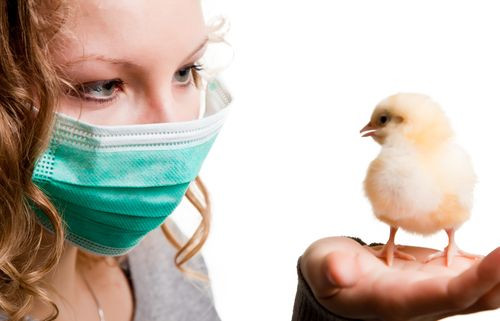Bird Flu Leads Hong Kong To Cull 20,000 Chickens: Could H7N9 Outbreak Trigger A Pandemic?

With just two days before the eve of the Chinese New Year, Hong Kong has ordered the cull of 20,000 chickens and enacted a 21-day live import ban. This measure comes shortly after an imported sample from Foshan, Guangdong Province, tested positive for carrying the Influenza A (H7N9) virus.
The authorities want to keep local cases of the disease from spreading via chickens arriving from China, which is Hong Kong’s main food supplier. Xinhua News reported the country has specifically banned live poultry trading in the cities of Hangzhou, Ningbo, and Jinhua in Zhejiang Province. "The province has launched emergency surveillance of poultry farms, haunts of migrant birds and parks, in addition to halting the flying of domestic pigeons," the agency said.
The Secretary for Food and Health Ko Wing-man said the affected market — Cheung Sha Wan Poultry Wholesale Market — will be closed for 21 days until Feb. 18. The Hong Kong disease control departments will clean and disinfect the premises. The suspension of the live chicken imports will also take place during the same period as the market closure. In addition, Agriculture, Fisheries and Conservation Department officers were ordered to inspect all the local chicken farms and obtain more samples for testing to ensure that local farms are not affected by the H7N9 strain.
"Of course there is inconvenience because we still need to pay the rent and we want to get paid. The sales volume will be affected", a 59-year-old trader with the surname Law told the Associated Foreign Press. The chickens from China have gotten mixed with local chickens in the wholesale market, meaning they would all have to be culled. The infected chickens would be killed off through a “chemical treatment,” or gassing with carbon dioxide, in which they would be sent to a landfill after.
This ban is proactive in its intention to limit the spread of human infections during the Lunar New Year celebrations. Chinese health officials have anticipated the rise of human infections during this time with millions of people expected to travel, and households slaughtering poultry for the festivities. Currently, there has been a seasonal rise in bird flu cases, with 96 confirmed in China this year so far, leading to 19 deaths, according to the Chinese Center for Disease Control and Prevention, Xinhua News reported.
China fears of a possible global pandemic rise during this bird flu season. The H7N9 virus can pass easily between birds and may potentially develop the ability to spread from human to human. Ferrets — the most common animal for human flu infections — were used in laboratory experiments to measure the H7N9 virus’ capability human-to-human transmission. Lab tests have confirmed this suspicion, along with small cases of the bird flu found among family members in China, the San Francisco Gate reported. However, the World Health Organization (WHO) claims it has not seen any viable evidence of H7N9 spreading from person to person.
H7N9 is one of a subgroup of influenza viruses that normally spreads among birds, according to the WHO. Human cases of H7N9 were reported in China in March and then saw a spike in April before agriculture officials temporarily closed the live poultry markets to eliminate as much human exposure as possible. There is limited information about the disease the virus causes and about the source of exposure, but both animal-to-human and human-to-human routes of transmission are being investigated by scientists. It is only recently that the virus has been seen in people, drawing a great cause for most patients who become severely ill.
Patients with H7N9 develop influenza-like symptoms that progress to respiratory distress syndrome, high fever, non-productive and productive cough, and shortness of breath, among many other symptoms. The virus is found to be particularly more active during the colder winter months.



























